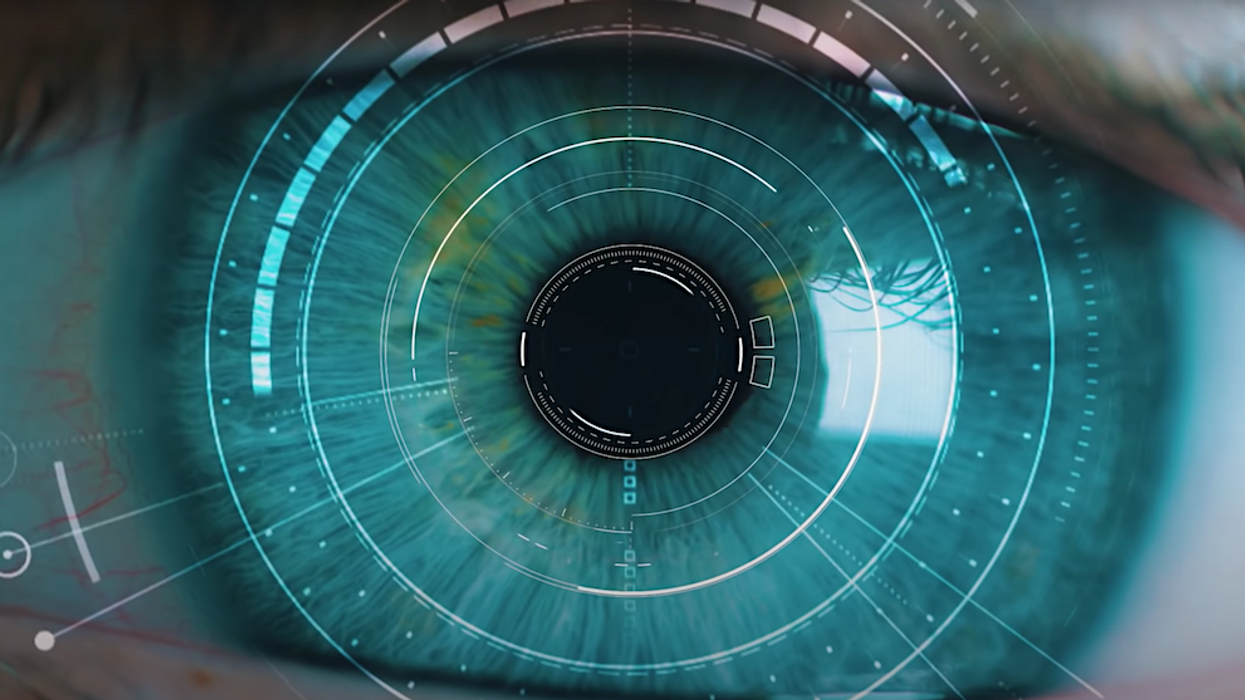What Are the 'Camera Specs' of the Human Eye?
Are your eyeballs broadcasting in 8K?

One of the things I wonder when I am preparing to shoot something is how my eyes translate to the camera. That's why it is so important to look through the camera and then at the monitor. Your eyes broadcast at a different aspect ratio and resolution than a camera.
That's a pretty obvious fact.
But what if your eyes were the camera?
What would the specs of that camera be?
It turns out I'm not the only one to get high and ask that question. The crew at Corridor Crew asked something similar and created a video with their answer. Check it out, and let's talk after the jump.
If Your Eye Were a Camera, What Would The Tech Specs Be?
I really loved this video and the hypotheticals inside of it. They took a RED Gemini camera and tested it against the human eye. Doing math that is way above my pay grade, they came up with some actual technical specs for the human eye.
Let's go over their findings.
Resolution
When it came to resolution, eyes got a little complicated. You see (pun intended), your eye only has a small focus point at the middle, called a fovea, where it has perfect clarity. Otherwise, it sort of blurs going outward. So when measured against a camera where everything is in focus, we have to look at a few numbers.
If you only take the fovea into account, our eyes have about a 3K sensor, which the RED camera beats. But if you take into account the entire eye, you realize the mind takes in around 130 megapixels and can compute much more.
If you want to go into even more detail, you can see how this all directly compares to the RED. This article explains that the Gemini has a pixel density ratio of 26,667 pixels per mm2. The human eye is 199,000 cones per mm2. That's approximately 7.46x as dense, or equivalent to 14K resolution.

Frame Rate
Frame rate is another thing people like to brag about within film.
Well, an eye has an independent frame rate for each pixel it creates. That means it can synthesize around 75fps on any normal day. But when you test the eye, it can recognize quick images at 220 fps.
As we know, the camera's frame rate is adjustable, but that's an incredible rate that you adjust within your brain. You can train the eye, and there are people with much better vision, but studies on average people can't notice a stutter beyond 56fps. However, the instantaneous response is much faster. The fastest record time is <0.008ms.
ISO
Lastly, they took a look at ISO.
Now, your ISO in a camera can depend on the lens, etc., but no matter what, eyeballs have them beat. You see, the human eye has a 3.2 as a resting point. But as we change lighting, the eye can switch from an ISO of 1 and also go up to an ISO of 1000 before being blacked out.
In low light, the native ISO for an eye is 16,0000. At night, the eye ISO is 800,000.
That's an incredible 21 stops of range for eyeballs.
So the next time you want to buy a fancy camera, think about the two already located in your head.
What's your favorite finding from this video? Let us know in the comments.











